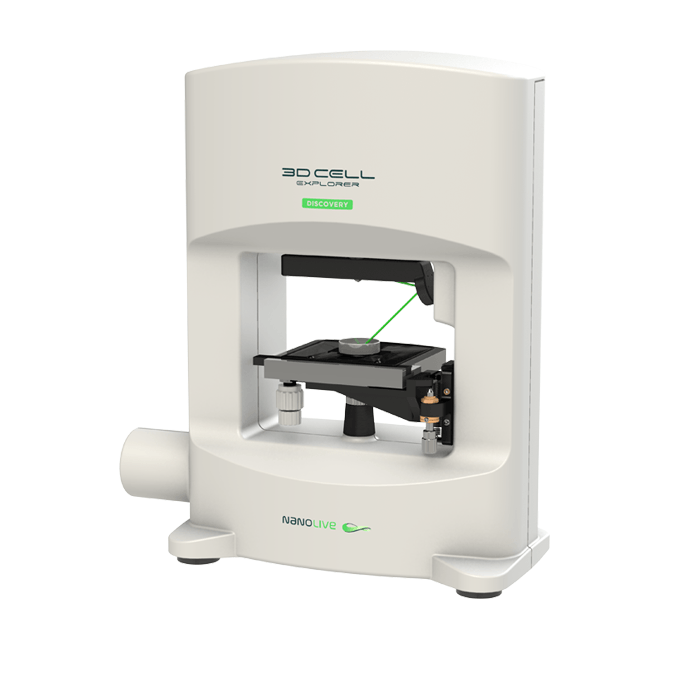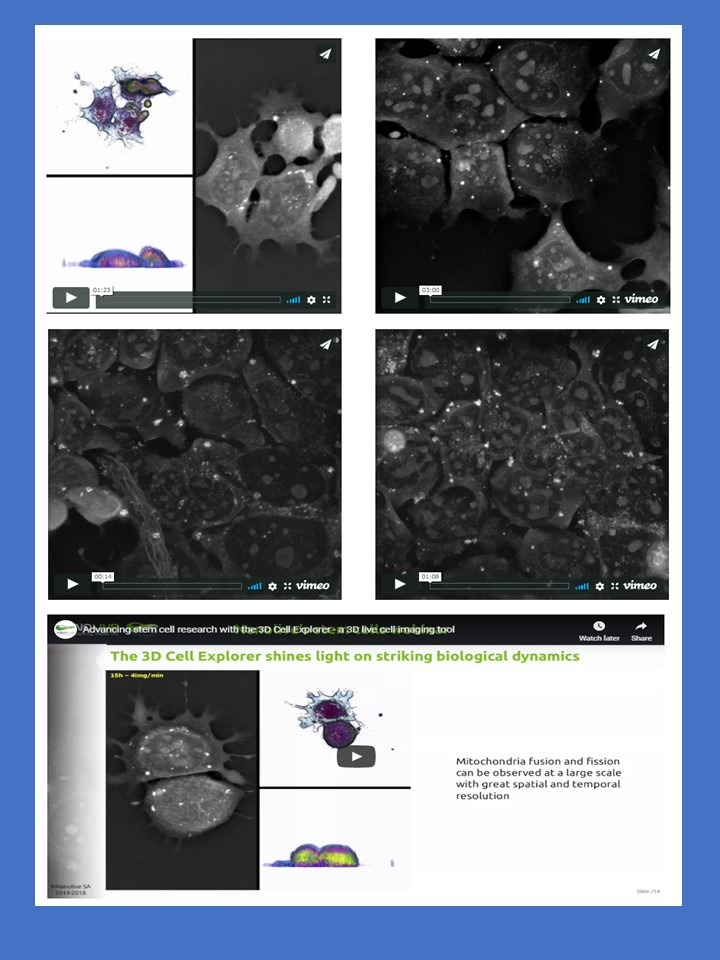
3D Cell Explorer - Live Cell Imaging Platform
Biological MicroscopyDigital MicroscopyLight MicroscopyLive Cell ImagingQuantitative Phase ImagingSuper Resolution MicroscopyTomographic Microscopy

Scientists can discover more about the behavior of stem cells with Nanolive’s 3D live cell microscope – the 3D Cell Explorer. This microscope offers the best contrast, resolution and versatility that a label-free microscopic approach can offer today, coupled to unmatched time resolution. Last but not least, it’s 3D.
One of the biggest challenges in cell biology is long-term imaging of fine cellular dynamics. In particular, the 3D Cell Explorer generates no phototoxicity as it injects in the sample ~100 times less energy (~0.2 nW/µm2) than light sheet microscopes (~1nW/µm2) that are the reference in the matter. With a resolution of 195nm (higher than standard confocal) it enables high resolution and high-frequency imaging even with sensitive material, such as stem cells*.
Unique dynamics of cellular organelles or highly dynamic and small cellular structures can now be clearly analyzed, such as mitochondria, lipid droplets, filopodia, dendrites, axons, nucleus and nucleoli etc.
With Nanolive’s live cell imaging tool, it is possible to perform endless live imaging at the maximal acquisition speed (1 image per 1.7 seconds). This certainly exceeds any live cell imaging capabilities of any other microscope and will revolutionize live cell imaging of stem cells. (*plus, the next generation holotomographic technology used to make these movies is sold at a fraction of the cost of a standard confocal)
To see more Nanolive videos related to this specific subject, please follow the link below
Dr. Mathieu Frechin, Head of Quantitative Biology at Nanolive introduces you to our holotomographic microscopy and its implications in long-term imaging of stem cells. He outlines the advantages that Nanolive’s holotomographic technology has to study sensitive cell lines. In particular, the following topics are being covered:
